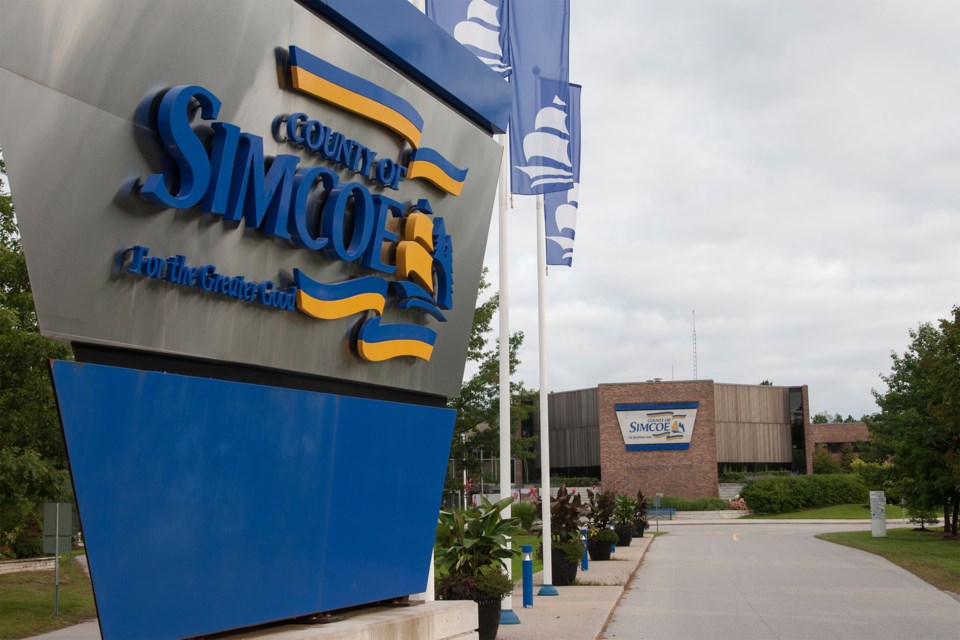NEWS RELEASE
RESCUE LAKE SIMCOE COALITION, SIMCOE COUNTY GREENBELT COALITION
*************************
MIDHURST – Two local organizations engaged in a planning process to help Simcoe County prepare for future growth, the Municipal Comprehensive Review, believe that key pieces of information and analysis need to be included to ensure this process benefits existing communities, local watersheds, climate and our economy.
This week, Simcoe County hosted information and Q&A sessions about this process where they presented details about how they are planning for growth until 2051 and what analysis will be used to decide how the region will prepare for a potential influx of 198,000 people.
Advocates say that what was presented shows there are significant questions and analysis that are missing from the current process.
“One of the key pieces missing is an analysis of how all this extra growth will impact Lake Simcoe and our local watersheds,” says Claire Malcolmson of the Rescue Lake Simcoe Coalition.
“Our lakes and rivers are not in great shape and can’t really afford more haphazard growth and the sewage and stormwater that come with it," said Malcolmson. "A critical question is whether the studies around our water, servicing and wastewater plans will influence and change the growth scenarios we were shown this week?”
Malcolmson notes that in York Region, the public was told how much more it would cost to provide services to support growth in rural areas versus established serviced communities.
In Ottawa, she explained, a similar analysis was done that showed growth in areas not serviced cost the municipality over $400 per capita even after taxes and development charges were factored in while directing growth to existing, serviced communities resulted in a surplus of over $600 per capita.
“Will people in Simcoe County get the same information? Residents have a right to know how their tax dollars are being spent and how their water will be protected,” she says.
There is also extra analysis that needs to be done to ensure that future housing supply will give people affordable housing choices.
“The kind of housing we build and where we build it has a big impact on affordability and emissions," said Margaret Prophet of the Simcoe County Greenbelt Coalition.
"Currently, the county isn’t analyzing whether the housing they have planned could be afforded by current or future residents," said Prophet. "York Region did that analysis and found that they needed to change what was built so people could afford a place to live.
"We, too, have a housing affordability crisis so the county needs to be analyzing this. Without it, the system is too vulnerable to developer pressures to build what makes them a profit, not what helps our communities,” said Prophet.
SCGC and RLSC believe that this exercise should be used to move toward a vision that promotes community health, affordability and climate action. Commonly known as 15-minute communities, the vision centres around making cost efficient investments in the community that allow people to access daily needs by no more than a 15 minute walk.
“It’s a long-term vision that won’t be realized overnight, but we can start working towards those changes today," said Kelly Gingrich, SCGC’s Youth Engagement Lead.
"What we know is that this type of community development leaves more money for community improvements, healthier for residents, leads to more affordable housing, has a lower impact on our environment and will help us meet our 2050 climate targets," said Gingrich.
"This is what the youth of today want and increasingly what communities around the world are moving towards. We’re in a climate emergency; we need to be acting accordingly.”
To help people articulate the future they want to see in the county, SCGC created a petition asking for 15-minute communities; The RLSC has a sign up sheet on their website and sends signers updates about opportunities to comment and engage, and sends these people suggestions about what to say within the MCR process.
The Municipal Comprehensive Review process will go on until July 2022 across Ontario.
At risk in Simcoe County are 420 hectares of land for residential and employment lands to 2051 (about 1037 football fields). This is on top of lands that are still natural but have been slated for development.
Across Ontario the extent of this provincially mandated development planning to 2051 threatens tens of thousands of acres of farmland and green spaces, putting clean water, farm viability, and access to nature at risk. Critics argue that it will be impossible to reach clean water and climate targets if the dominant pattern of growth results in communities that can only be navigated by car.
“The MCR is being treated as an administrative exercise, but it’s deciding a lot about big picture issues that residents really care about: climate, housing and affordability, Indigenous rights, public and mental health, social justice," says Gingrich.
"These decisions today will have an impact on the next several decades, especially for today’s youth. It’s important to speak up for the community you want today," says Gingrich.
*************************
